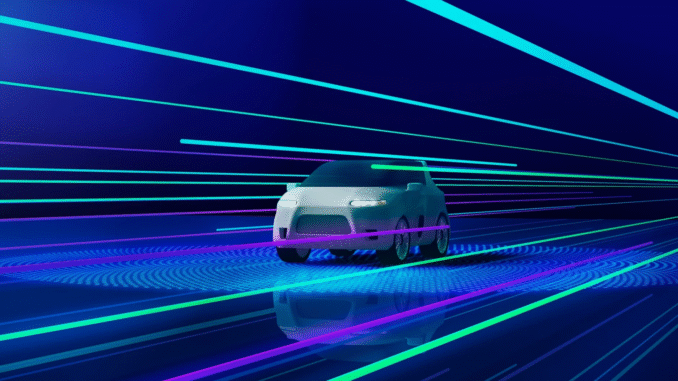
The Future of Cars: Trends and Innovations to Watch in 2025
The automotive world is accelerating into a future shaped by cutting-edge technology, environmental awareness, and a growing demand for smarter, safer vehicles. As we enter 2025, the future of cars is no longer a distant vision—it’s unfolding before our eyes. From electric mobility to autonomous features and connected car ecosystems, the automotive landscape is evolving rapidly. Here’s a closer look at the key trends and innovations shaping the future of cars in 2025.
1. Electric Vehicles (EVs) Go Mainstream
Electric vehicles are no longer just for early adopters or eco-conscious drivers—they’re becoming the new norm. In 2025, EVs are expected to represent a significant portion of new car sales worldwide. Major automakers like Tesla, Ford, GM, and Volkswagen are launching a wider range of EV models to appeal to all consumer segments, from luxury buyers to budget-conscious commuters.
Advances in battery technology have played a crucial role in this shift. New solid-state batteries and improved lithium-ion designs are offering longer ranges, faster charging, and enhanced safety. With many countries setting deadlines to phase out internal combustion engines, the momentum behind electric mobility is undeniable.
What to Watch:
- Affordable EVs under $25,000
- Expansion of fast-charging networks
- Government incentives and EV tax credits
2. Autonomous Driving Technology
While fully self-driving cars are still in development, 2025 will see significant advancements in semi-autonomous driving features. Level 2 and Level 3 autonomy—where the car can handle certain driving functions under specific conditions—are becoming more common.
Brands like Tesla (with its Full Self-Driving beta), Mercedes-Benz, and Waymo are leading the charge in autonomous innovation. These systems rely on sensors, cameras, LiDAR, and AI-powered software to enhance safety and convenience. Expect to see more highway autopilot features, automatic lane changes, and traffic jam assist systems integrated into new models.
What to Watch:
- Regulation and safety standards for autonomous features
- AI improvements in perception and decision-making
- Human-machine interface upgrades
3. Connected and Smart Cars
Cars are evolving into mobile digital platforms. In 2025, vehicles will be more connected than ever, with embedded 5G, Wi-Fi, and cloud computing capabilities. This connectivity enables real-time navigation, traffic updates, over-the-air software updates, and enhanced infotainment systems.
Smart cars can also communicate with each other and with infrastructure—known as V2V (vehicle-to-vehicle) and V2I (vehicle-to-infrastructure) technology. This improves safety by providing alerts for potential collisions, traffic jams, and road hazards.
What to Watch:
- Voice-activated personal assistants in cars
- Integration with smart home ecosystems
- Subscription-based vehicle software and services
4. Sustainable Materials and Eco-Friendly Manufacturing
Beyond electric powertrains, sustainability is influencing how cars are built. Automakers are increasingly using recycled, biodegradable, and plant-based materials in car interiors and components. From vegan leather seats to dashboards made from recycled plastics, the goal is to reduce the environmental impact of vehicle production.
Factories are also becoming greener, with manufacturers investing in renewable energy, reducing water usage, and improving waste management in their supply chains.
What to Watch:
- Carbon-neutral manufacturing facilities
- Widespread use of recycled materials
- Emission tracking and transparency
5. Enhanced Safety Systems
Safety remains a top priority, and 2025 brings new levels of protection through advanced driver assistance systems (ADAS). These systems combine sensors, AI, and machine learning to prevent accidents before they happen.
Common features now include automatic emergency braking, blind-spot detection, adaptive cruise control, and pedestrian detection. Newer innovations are focusing on driver monitoring systems that detect drowsiness or distraction, ensuring the driver is alert and attentive.
What to Watch:
- Vehicle-to-pedestrian (V2P) communication
- AI-driven crash prevention systems
- Improved night vision and 360-degree cameras
6. Personalized Driving Experience
Customization goes beyond trim and color choices. In 2025, cars are designed to adapt to individual drivers through AI and data-driven personalization. From seat positions and climate control to music preferences and route planning, vehicles will remember and adjust to your habits.
Machine learning algorithms can also offer driving tips to improve fuel efficiency or suggest alternate routes based on traffic patterns. Some systems may even detect health issues and offer alerts in emergencies.
What to Watch:
- AI-based driver profiles
- Gesture and voice control for in-car systems
- Augmented reality (AR) dashboards and head-up displays
7. The Rise of Mobility-as-a-Service (MaaS)
Car ownership is shifting in urban areas, where space is limited, and ride-hailing, car-sharing, and subscription services are on the rise. Mobility-as-a-Service (MaaS) platforms combine various forms of transport into a single accessible service.
Consumers can use one app to book and pay for multiple transport options—from electric scooters to ride-hailing vehicles. Automakers are partnering with tech companies to offer flexible ownership models, including monthly subscriptions where users can swap between vehicle types.
What to Watch:
- Growth of vehicle subscription services
- Integration of multimodal transport options
- City-level smart mobility networks
8. Car Design Reimagined
With the shift to electric drivetrains and autonomous driving, car design is also undergoing a transformation. Without the need for traditional engine components, designers are rethinking vehicle architecture. Expect sleeker exteriors, more spacious cabins, and modular interiors.
Autonomous vehicles especially pave the way for lounge-like interiors, rotating seats, and reconfigurable spaces. Touchscreens, ambient lighting, and minimalistic dashboards are becoming standard features.
What to Watch:
- Concept cars with radical interior layouts
- Futuristic exterior lighting and aerodynamics
- Sustainability in design aesthetics
Final Thoughts
The future of cars in 2025 is shaped by a combination of innovation, connectivity, and environmental responsibility. As technologies continue to evolve, drivers can expect vehicles that are not only cleaner and safer but also more intelligent and integrated with their digital lifestyles.
Whether you’re a car enthusiast, a commuter, or a tech lover, the road ahead is exciting. Staying informed about these trends will help you make better decisions—whether you’re buying your next car or simply keeping pace with a rapidly changing world.
